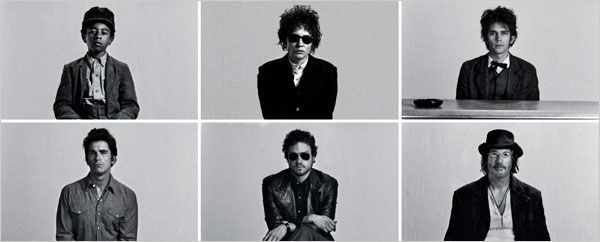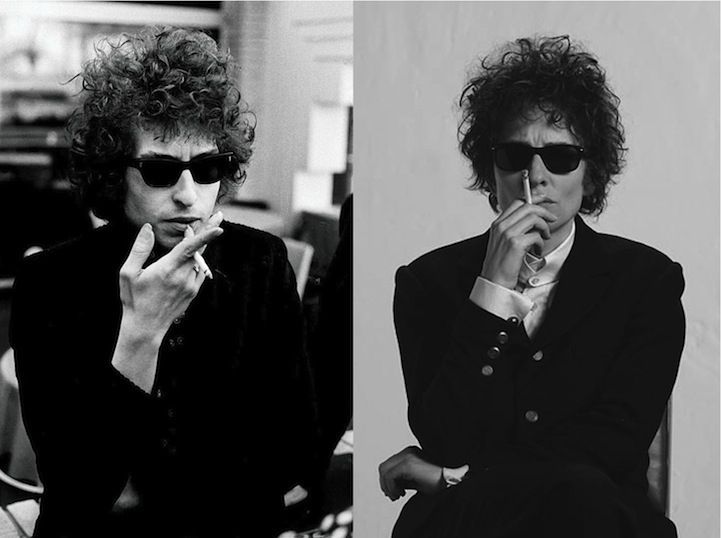I'm Not There, But I Wish I Was...
Jun 11, 2019 • 36 views
“And I run but I race, But it’s not too fast to slim
But I don’t perceive her, I’m not there I’m gone.”
Right off the bat, I can assure you that you have never seen a movie like I’m Not There. You might think you recognize this film’s genre, but I’m sure it can break out of any tags you try to put on it.
The film was advertised as being about the legendary musician Bob Dylan i.e. a musical biopic – a genre that seems to be getting really popular these days, what with Bohemian Rhapsody, Rocketman, Walk the Line and so on (though I’m Not There came out all the way in 2007). However, there is a twist. In the opening credits, the film mentions that it is “inspired by the music and the many lives of Bob Dylan”. Dylan was renown to be so eccentric that he would constantly reinvent himself, even at the height of his fame, as if on a whim. His story is one that is full of twists and turns, many parts shrouded in mystery, and populated by numerous contradictions. Director Todd Haynes decided that the best way to tell this story would be through an equally fragmented, mysterious and extravagant film. He decided that there would be six protagonists, and all of them playing Dylan. And yet, never is the name ‘Bob Dylan’ uttered anywhere in the whole movie.

Now that you’ve got a taste of how enigmatic this film can be, let me tell you about my relationship with it. Love at first sight. You know how you have that one crush in school that is just so intense that you would do anything for them? There is no personal rule that you wouldn’t break, your dignity matters the least when it comes to them, and any fault that they may have, you are more than blind to it. That’s how I feel about I’m Not There. I have rose tinted glasses on rose tinted glasses for it.
I do not know what this movie is like when looked at objectively, because it has always been (and probably will forever continue to be) impossible for me to be objective about anything to do with Bob Dylan. To me, this movie is just amazing and I still cannot figure out how something like this was ever conceived, let alone executed.
To get the most obvious stuff out of the way, the cast of this movie is stunning. The six versions of Dylan are played by Ben Whishaw (as Arthur, the poet), Christian Bale (as Jack Rollins, the prophet), Richard Gere (as Billy the Kid, the outlaw), Marcus Carl Franklin (as Woody, the fake), Heath Ledger (as Robbie Clark, the star of electricity), and Cate Blanchett (as Jude Quinn, the ghost). In addition, the movie also stars Michelle Williams, Julianne Moore, Charlotte Gainbourg and David Cross (as Allen Ginsberg). The six protagonists inhabit their own stories (each one, a stage in Dylan’s life), all shot in different styles, and edited together in a way that can only be described as whimsical. But it is not so, because there is an unheard rhythm that it follows, bringing out contrasts and similarities in the most indirect ways. The most interesting bits, to me, are Cate Blanchett’s and Heath Ledger’s. Not that the others are any bad, but these two just stand out. Blanchett is spectacular as Dylan, almost perfect (whose brainwave was that?) and Ledger shows us a vulnerable side in his performance – Dylan’s turbulent family life.

Another important aspect that distinguishes it from other biopics is how you don’t come out of the film any more knowledgeable about Dylan. In that sense, it is a massive fanservice of a film, full of nods and winks towards those in the audience who are informed about the events in Bob Dylan’s life. In fact, if someone were to go into this film completely unaware about the Nobel prize winning musician, they would come out thoroughly confused (I sincerely hope this article doesn’t leave you similarly confused). This is because the film has no pretensions of being history. It actively blurs the line between fact and fiction (just like Dylan himself), interested in only telling a story. It is even surreal at places, especially in the iconic scene where Jude Quinn floats like a balloon, tethered only by a string.
I’m Not There gets its name from a not so famous Dylan song; it has only one recording and he has never performed it live. I’m sure Todd Haynes knew what he was doing when he picked the name, because the song is just as enigmatic as the movie. It begins abruptly, as if in the middle of a line, and it ends as abruptly. In addition, though the song is entrancing, the lyrics do not really make that much sense (and many of the words are still unknown).
Following the thread of music, the film’s greatest advantage is that Dylan let them use his music in it. It’s an absolute treat to watch scenes be punctuated and often enhanced by his most popular hits. I love how 'I Want You' is used as the background for the development of Robbie’s relationship with Claire, and how ‘Ballad of a Thin Man’ was visualized using an absolutely haunting and surreal sequence, that somehow also complements the story.
This was one of the hardest movies I had to write on, because there was just so much I wanted to gush about. I’ve managed to limit myself, though it feels a bit incomplete (perhaps that is appropriate). I do not think I need to say this again, but I would recommend this movie any day, just make sure to read a little on Bob Dylan though.
